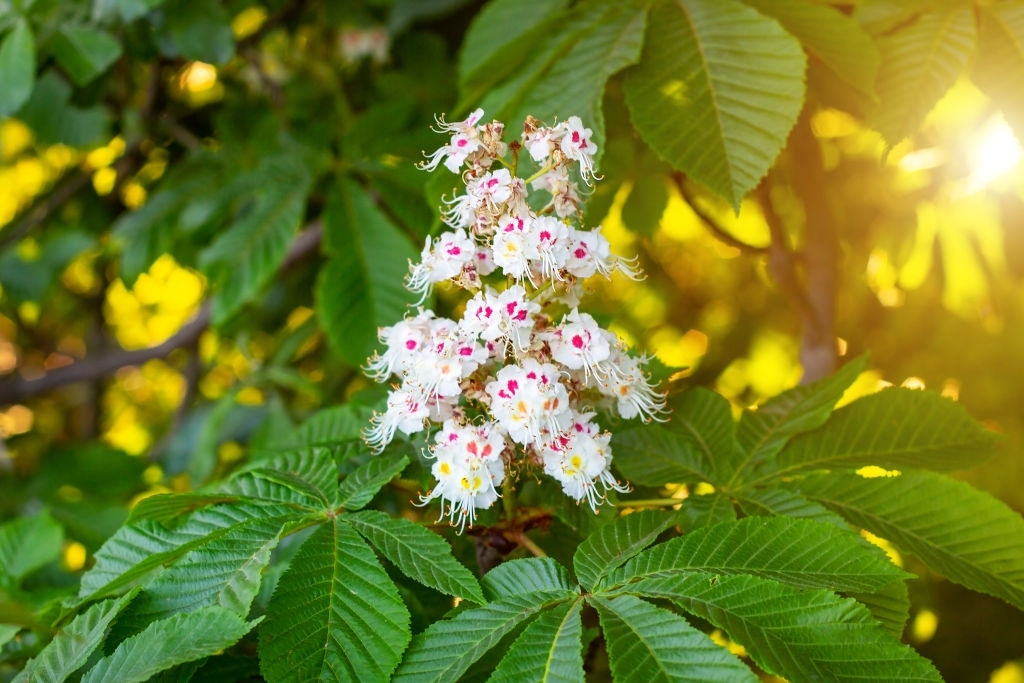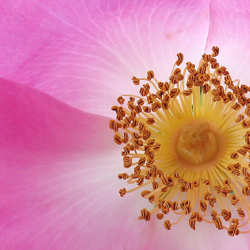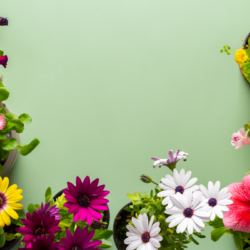Discover the fascinating history of the horse chestnut in Europe, a journey through time and space. Native to the Balkans, northern Greece, Turkey, the Caucasus and northern India, this remarkable tree was introduced to Europe during the Renaissance. First described in Italy in 1565, it then spread to Vienna, France and the rest of Europe. In addition to its age-old medicinal uses, the horse chestnut has become an essential part of urban biodiversity and a powerful cultural symbol. Explore its history and its many facets in this detailed article.
A little history
In 1565, the Flemish physician Guillaume Quackelbeen, who was in Constantinople at the time, sent twigs and fruit of the tree to Matthiole in Italy, where it was described and illustrated. Around ten years later, the first chestnut trees were planted in Vienna. Four centuries ago, the tree appeared in France, in Paris, through the good offices of Dr Bachelier, who also sent chestnuts from Constantinople.
It gained a foothold in Strasbourg in 1691 and, in the 18th century, spread rapidly to many European countries, including Great Britain, where Dr Bach had the opportunity to meet it at the beginning of the 20th century in order to concoct some of his famous Bach flowers, White Chestnut and Chestnut Bud.
In certain regions of the Balkans, the leaves and seeds of the chestnut tree were used in the form of poultices to heal wounds and reduce inflammation. In folk medicine, the bark and leaves were often used to treat sore throats and respiratory problems.
The Latin adjective hippocastanum (meaning “horse chestnut”) refers directly to a veterinary use advocated by the Turks. The story goes that chestnuts have long been used to cure horses of their palsies. The Latin name is therefore marked by this anecdote, but it seems that this property was not exploited in Europe.
What is the ecological and cultural impact of the horse chestnut?
The horse chestnut’s environmental and cultural impact is significant in several respects.
From an environmental point of view, growing horse chestnuts is good for biodiversity and the ecosystem. Horse chestnuts are often planted in urban areas for their beauty and ability to provide shade, helping to improve air quality and providing a habitat for various species of birds and insects.
From a cultural point of view, the horse chestnut occupies a significant place in the popular culture of many European countries. It is often associated with traditions and legends, symbolising strength and perseverance. In Great Britain, for example, horse chestnut seeds are used in the traditional game of “conkers”, which is very popular with children.
These aspects clearly show that the horse chestnut is much more than just a medicinal plant; it plays an important role both ecologically and culturally.
What are the main pharmacological properties of Horse Chestnut seeds?
Anti-inflammatory, anti-exudative and anti-oedematous properties:
The anti-oedematous, anti-inflammatory and veinotonic properties ofaescin are mainly linked to a molecular mechanism which allows better entry of ions into the channels, thereby increasing venous tension under in vitro and in vivo conditions.
Horse chestnut promotes the secretion of F2α prostaglandins and has corticomimetic activity, which reinforces its anti-inflammatory activity.
Anti-free radical and antioxidant properties :
In vitro, horse chestnut extract has a strong scavenging effect on different forms of active oxygen, such as superoxide anion, hydroxyl radical, singlet oxygen and lipid peroxides. It protects against the cellular damage they cause.
Four majoraescin isomers have been identified in horse chestnut seed extracts. The highest aescin content with the highest antioxidant potential is obtained with a methanolic extract.
Venous and capillary protective properties :
-
Venous :
Aescin reduces the blood viscosity index and has a tonic and vasoconstrictive action on the venous wall. Its venotonic and anti-inflammatory mechanism also involves interference with lysosomal enzymes: in vitro, it specifically inhibits hyaluronidase, an enzyme involved in the renewal of the main components of perivascular amorphous substance, and responsible in particular for degrading hyaluronic acid, a glycosaminoglycan widely distributed in connective tissue and one of the main components of the extracellular matrix. It also protects the proteoglycans that make up the vascular wall.
A 2006 review of the literature showed that randomised, double-blind, crossover clinical trials conducted in patients suffering from chronic venous insufficiency (4) and varicose veins (5) demonstrated the significant efficacy of oral administration of preparations containing an extract of the fresh plant ofAesculus hippocastanum. These trials demonstrated a reduction in oedema in the leg, as measured by objective plethysmography, and subjective relief of heaviness, pain, night cramps, tension and itching in the lower limbs. These studies have shown that these extracts are safe, well tolerated and accepted, and represent a genuine therapeutic option for patients with mild to moderate venous insufficiency.
-
At capillary level :
Horse chestnut seed increases capillary resistance, acts as a capillary constrictor and reduces transcapillary filtration, which is responsible for oedema ( bags under the eyes, swollen legs, etc.).
Other properties :
- Normoglycaemic
- Nephroprotective
- Diuretic
- Anti-infective
- Neuroprotective
- Gastroprotective
Are there any precautions to be taken when using Horse Chestnut?
Toxicity :
- Horse chestnut contains esculin, a glucoside in the coumarin group, which is toxic in high doses.
Contraindications:
- The EMA specifies that the use of horse chestnut is not recommended for pregnant or breastfeeding women, or for children under the age of 18.
- Avoid in cases of allergy to latex.
- Nephrotoxicity at high doses, so contraindicated in renal failure.
Precautions for use :
- Stop taking horse chestnut 72 hours before surgery, to limit the risk of haemorrhage.
Drug interactions :
- An interaction is possible with warfarin and anti-vitamin K drugs, which requires medical supervision and monitoring of the INR when introducing and interrupting treatment with horse chestnut extract.
- In theory, the hypoglycaemic effect of horse chestnut can be added to that of hypoglycaemic drugs.
- Possible interaction with plants and anticoagulant drugs.
How should Horse Chestnut be taken and at what dosage?
Dry form :
- As a dietary supplement, in the form of a standardised fresh plant extract, in capsules.
Liquid form :
- Standardised fresh plant fluid extract: 5 to 10 ml per day in a glass of water.
- Whole suspension of fresh plant: 5 to 15 ml per day in a glass of water.
- Hydroalcoholic extract: 20 to 25 drops diluted in a drink, 2 to 3 times a day.
How can Horse Chestnut bud be used in combination for different illnesses?
| Health problems | Horse Chestnut buds associated with |
|---|---|
| Haemorrhoids | Chestnut and Sorb for circulation |
| Heavy legs | Chestnut for decongestion |
| Varicose veins | Chestnut and Sorb for veins |
| Couperose | Ginkgo Biloba and Walnut for microcirculation |
| Asthma | Hazel for the lungs |
| Dysmenorrhoea | Raspberry for hormonal balance |
This table gives an overview of the possible synergies between Horse Chestnut bud and other plants to treat various health problems, focusing on their combined effectiveness.
In the field of phytotherapy, Horse Chestnut bud is recognised for its beneficial properties in the treatment of various ailments. By using synergies with other plants, its effects can be optimised. For haemorrhoids, for example, the combination with Chestnut and Sorb is ideal. People suffering from heavy legs can benefit from the combination of Horse Chestnut and Chestnut. For varicose veins, Chestnut and Sorb buds reinforce the circulatory benefits of Chestnut. For rosacea, Ginkgo Biloba and Walnut improve microcirculation. For asthma, Hazelnut provides pulmonary support. Finally, for dysmenorrhoea, the combination with Raspberry helps to rebalance hormones. These combinations make it possible to fully exploit the virtues of Horse Chestnut as part of a natural, effective treatment.
The latest scientific studies on Horse Chestnut
What is the antiviral potential of horse chestnut extract against RSV?
A recent study found that horse chestnut extract (Aesculus hippocastanum L.) has a distinct effect on normal human dermal fibroblasts and those associated with cancer, particularly those derived from basal and squamous cell carcinomas. The extract specifically stimulates fibronectin deposition in basal cell carcinoma fibroblasts. This joint action with TGF-β1 results in a notable increase in smooth muscle actin stress fibres, especially in cancer-associated fibroblasts. These results suggest important differences in the response of fibroblasts depending on whether they are normal or cancer-associated, offering new prospects for the development of treatments targeting these cells in wound and tumour environments.
Horse chestnut: Miracle for cancerous fibroblasts?
Recent studies have examined the antiviral properties of horse chestnut (Aesculus hippocastanum L.) seed extract, focusing on its main bioactive constituent, β-escin. This research has highlighted the potential efficacy of this extract in the treatment of various enveloped viruses, including respiratory syncytial virus (RSV).
In one specific study, horse chestnut seed extract demonstrated significant virucidal and antiviral activities against RSV. In addition to these antiviral properties, the extract also showed immunomodulatory effects, influencing signalling molecules such as NF-κB and AP-1, as well as cytokine production in RSV-infected epithelial and macrophage cell lines. In a mouse model of RSV lung infection, treatment with horse chestnut extract improved the course of acute disease, reducing weight loss, lowering RSV titres in the lungs and attenuating airway inflammation.
These findings suggest that horse chestnut extract, and β-escin in particular, could play an important role in the development of new antiviral therapies, particularly for respiratory infections such as RSV. It is important to note, however, that these results are preliminary and that further research is needed to confirm these effects and assess their applicability in a clinical context.
Medical literature and clinical trials:
- Bruneton J., Pharmacognosie, phytochimie, plantes médicinales, Tec & Doc, 1999
- Masaki H. et al, Active-oxygen scavenging activity of plant extracts, Biol Pharm Bull, 1995
- Suter A. et al, Treatment of patients with venous insufficiency with fresh plant horse chesnut seed extract ; a review of 5 clinical studies, Adv Ther, 2006
- Facino R.M. et al, Anti-elastase and anti-hyaluronidase activities of saponins and sapogenins from Hedera helix, Aesculus hippocastanum, and Ruscus aculeatus: factors contributing to their efficacy in the treatment of venous insufficiency, Arch Pharm (Weinheim), 1995
- Kukula-Koch W. et al, Influence of extrahent on antioxidant capacity of Aesculus hippocastanum seeds, Nat Prod Res, 2015
- Sirtori C.R., Aescin : pharmacology, pharmacokinetics and therapeutic profile, Pharmacol Res, 2001
- Neoplasma. 2022 Jan;69(1):224-232. doi: 10.4149/neo_2021_210622N826. Epub 2021 Dec 29.
Aesculus hippocastanum L. extract differently modulates normal human dermal fibroblasts and cancer-associated fibroblasts from basal/squamous cell carcinoma - Published: 17 March 2024
Aesculus hippocastanum extract and the main bioactive constituent β-escin as antiviral agents against coronaviruses, including SARS-CoV-2





